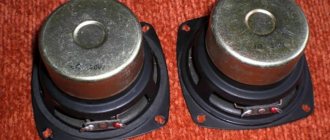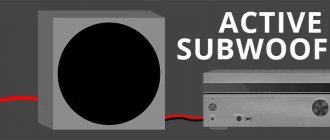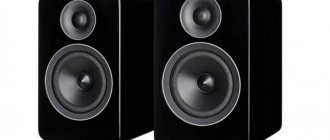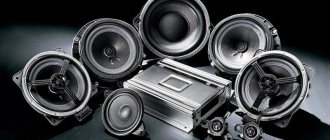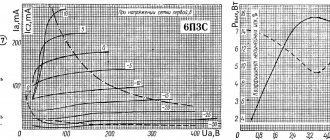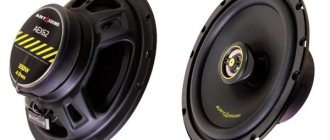MC heads have many advantages. But there is also a big disadvantage - a non-removable needle
For many vinyl lovers, choosing a pickup head is a truly sore point. Everyone wants to purchase the best quality option within a small budget. Is not it? Is this possible? And which is really better: a MM or MC pickup? What is the main selection criterion? And what is the difference between them?
Let's start with the basics (it would be more correct, in our opinion), because some of the readers are probably new to this topic and for the first time faced the problem of choosing a pickup head, with the features, specifics, varieties and functions of this part of the player.
What is the role of the pickup head?
The pickup head converts the modulations of the record's sound groove into an electrical signal. That is, the task of this part is to convert mechanical energy into electrical energy and transfer it to the loudspeaker of the playback system, which, in turn, converts the electrical signal into pure energy of sound waves.
Pickup components and operating principle
Any pickup has a stylus, a needle holder, a generating system and a housing in which all this is located. By the way, the case serves as protection for the “filling” from external influences and damage. The needle is usually made of diamond (only this material ensures maximum wear resistance and strength of the needle). It is secured to a special needle holder (it is usually located in the lower part of the body and looks like a small lever). The needle moves in different directions according to the modulation of the sound groove. Its movement is transmitted to the generating system with the help of a needle holder. This is how mechanical energy is converted into an electrical signal.
MM pickup heads are more affordable in price, but at the same time they are inferior in some characteristics to their MC “brothers”
Tonearms are different
Based on the method of mounting to the tonearm, pickups can be divided into two main types. The most popular is to attach the cartridge to the tonearm holder (shell) using two screws. The distance between the holes on the headshell and the pickup body is standardized and is half an inch. There are also cartridges that are connected to the end of the tonearm, if the latter supports this particular type of connection. These cartridges can either be already installed on the shell (P-Mount), or have a design similar to the Ortofon SPU series models.
MM (Moving Magnet Heads) and MC (Moving Coil Heads) Features and Benefits
MM-heads, like MC-heads, have a number of advantages: low clamping force, a wide range of reproduced frequencies, good separation between stereo audio channels, a clear “bending” of the groove of a vinyl record and high flexibility of the moving system.
Moving magnet cartridges (MM cartridges) have small magnets attached to the stylus clamp. They move in a stationary coil, which is located in the pickup body itself. The magnetic field generated by the movement of these magnets creates an electrical voltage in the coil. This is the future sound signal.
The same physical principle is present in the operation of moving coil pickups (MC heads). But in this case, the magnets always remain completely motionless. The movement is carried out only by the coil. This type of pickups has less moving mass compared to analogues with moving magnets. This feature allows the MC heads to follow the media groove better and in more detail. In addition, experts say that moving coil cartridges have better transient response than MM cartridges because there is less mass to drive. Due to this feature, moving coil MC heads can most clearly and quickly track live changes in the signal recorded on vinyl.
You need to know about this: cons
MC moving coil cartridges typically have a permanent stylus. This is their main disadvantage. If the stylus becomes faulty, then you will have to replace the entire pickup with a new one. Also, MC heads have low sensitivity due to the limited number of coil turns. And their price is significantly higher than MM heads, which also cannot be considered an advantage. In MM heads with moving magnets, unlike their “brother,” on the contrary, the needle is easily replaced. And the cost pleases with its democratic nature. But there are also disadvantages: using a magnet only with high magnetic energy, as well as with a small mass, in order to increase the sensitivity of the head itself and its upper limit frequency. Because of this, nonlinear distortion often occurs (more noticeable than with MC heads).
Opinion about Clearaudio Concept V2
These cartridges are best suited for low-cost turntables. Their sound quality is not the best. The needle in the presented head is installed with a pointed tip. The model has a plastic tonearm. The fastening itself is of the screw type. The holder in this case is not large.
Stereo separation occurs at a frequency of 24 dB. The height of this model is only 13 mm, and the device weighs 6.7 g. The output resistance is no more than 55 kOhm. Also noteworthy is the small maximum frequency at 400 Hz. The presented head is not suitable for monographic recordings. The user can buy it for 33 thousand rubles.
What to look for when choosing a pickup head?
If you decide (or are forced) to change the cartridge head, then you should consider the material from which the needle holder is made, as well as the shape of the needle itself.
The modern market offers a large selection of needles:
- Inexpensive and simple ones include spherical or, as they are also called, conical needles . They look like a small piece of natural diamond, which due to special grinding and processing received a conical shape. The radius of a needle of this type usually does not exceed 15 microns, since the end of the needle must be easily immersed in the connector of the sound groove of the record. But let's be honest - conical-type needles cannot accurately track the modulation of the sound groove due to the difference in their shape with the cutter of the recording head. This feature can even lead to the needle being “pushed” out of the groove.
- Elliptical needles will prevent the above problem from occurring. This type of needle has an oval point in cross-section with 2 flat surfaces, rather than a round tip. Therefore, an elliptical needle shape is more consistent with the groove configuration. This minimizes distortion and prevents "pushing" and "unbending". By closely following the high frequency modulation, the elliptical needle can distribute pressure evenly over a large surface area. This property significantly reduces the wear of the vinyl record.
- Hyperelliptical needles (Van Den Gool; Shibata and some others) have the sharpest end. Therefore, they can perhaps be called the best and most perfect. But at the same time, this class of needles requires the most precise adjustment and installation of the pickup head compared to simpler options.
- There are also special microcombs (as one of the subtypes of the elliptical needle). They have small grooves located on both sides of their tip. Even with fairly heavy wear, needles of this type still retain their original shape. And this allows you to avoid distorting the interaction between the sound groove and the needle.
The shape of the needle also affects the location of the contact points of the needle with the groove walls in relation to the cutter
As for the stylus holder, its main role is to transmit mechanical vibrations of the stylus (needle) to the phono stage. A good needle holder is a rigid and lightweight part. It doesn't have to be resonant. Parts with better rigidity and low mass (which is ideal) are made from beryllium, ceramics, diamond, boron, titanium, sapphire or ruby. Often, needle holders are made hollow (to minimize the weight of the part), and sometimes, on the contrary, they are filled with a special material that allows resonances to be well damped.
Models
One of the modern representatives of the budget class is the MF 100 pickup stylus. The cost is about one and a half thousand rubles. The manufacturing company is the Japanese Stylus Co. The part is compatible with Soviet players.
The Unitra pickup stylus is made in Poland. The maximum popularity of the part was in the 80s of the 20th century. Suitable for installation on Polish and Soviet players. The price varies from one and a half to two thousand per unit. Copied from the Dutch Tonorel.
Proper care saves money and ensures longevity
You have probably already familiarized yourself with the pricing policy of pickup heads, weighed everything and understood how much changing this part will cost you from a financial point of view? Yes, it's not cheap. But when there is no choice left, you have to pay as much as you need. Often this happens due to our carelessness, lack of time, fatigue, ignorance or basic “not giving a damn.” The importance of proper processing of parts cannot be underestimated!
In order for the pickup head to last as long as possible in the best quality and shape, not spoil your favorite records and give excellent sound, you need to properly care for it. Soul's Sound, relying on the advice of experts, invites you to familiarize yourself with simple and useful recommendations that will help extend the life of your stylus:
- Clean the stylus before listening to each side of the record with a special brush, because particles of dust and dirt, accumulating on the stylus, like sandpaper, destroy the walls of the groove;
- The stylus should be processed as follows: from the back to the front. This should be done so that the movements of the brush fully correspond to the direction of movement of the vinyl record;
- Do I need to use special cleaning fluids? The question is controversial. Some manufacturers do not recommend it, while others, on the contrary, advise using preparations to most effectively remove dirt from the needle. You decide. But at the same time, choose the product carefully (consult with a specialist) and use the instructions;
- when choosing the type of brush (size, bristle stiffness, bristle length, etc.), rely on the instructions from the manufacturer of a particular pickup;
- and remember - you can start cleaning the stylus only when the tonearm is well fixed!
The main thing is on time!
With proper, appropriate care, the stylus can last quite a long time. Check the stylus under a microscope (you can also use a magnifying glass or loupe) every 500 hours of operation of the pickup head in order to timely identify defects and promptly eliminate them.
That's all for today. But we will return more than once to topical issues of choosing, setting up equipment, and comparing parts and components. Because we know it's important for true audiophiles and vinyl lovers. We want you to always be able to enjoy listening to records and enjoy their special sound, and therefore we try to share with you the most useful information that can help you achieve this goal. See you at Soul's Sound, friends!
The needle is in the details
Physical wear is calculated by examining the part under a microscope. You can understand that it is time to change the radial stylus by seeing sawed strips in the places where the part comes into contact with the plate. If the product is worn out, it becomes triangular. A worn needle can easily ruin expensive vinyls.
Records accumulate dirt in the grooves, which increases the abrasiveness of the product. The higher the initial abrasive properties and the longer the plate is used, the faster the system wears out. When choosing a product, make sure that the manufacturer indicates the service life of the part. Mostly, equipment is produced for 500-1000 hours of playing tunes.
The degree of wear does not always correspond to the passport data. After the stated thousand operating hours, the system does not lose its ability to reproduce sound, but its quality deteriorates. You can visually assess the degree of wear using microscopes:
- interference;
- electronic.
When making a replacement, make a reference recording, setting the bit depth to 96kHz/24bit. This will help compare the sound quality after a period of operation.
Modern needles
Increased sensitivity is characteristic of the Denon DL 110 model. The input resistance is 30 kOhm. Weight with head - 6.2 g, clamping force at maximum - 2.4 g. The screw fastening on the lever is reinforced. Piezoelectric damper. Advantages of the model:
- can be placed in the radio;
- careful use of the record.
Price - about 33,000 rubles.
The Denon DL 115 needle is in demand. Product parameters:
- height - 15 mm;
- resistance - 38 kOhm;
- downforce - 2.3 g;
- imbalance by 2.3 dB.
The stylus is metal, the pickup body is plastic. The average cost is 24,000 rubles.
A joint development of Japanese and New Zealand manufacturers - Te Kaitora. The price of the product is 25,000 rubles. Peculiarities:
- titanium head;
- downforce - 1.8-2.2 g;
- head radius - 7 x 30 microns.
A replacement Audio-Technica AT92ECD stylus costs about 1,500 rubles. It weighs only 0.3 ounces and measures 8*1*6 inches. The product is made in the USA. Suitable for elliptical cartridges.
Summing up
When choosing a stylus, pay attention to how much it damages the record, whether replacement at home is acceptable, and what pickups and turntables the product is compatible with. The goods are not cheap, the price of some copies is tens of thousands of rubles. If the level is average, the price varies around 2-4 thousand per copy. There are very cheap ones - for 500-800 rubles. It is not recommended to save or use a used needle. Remember that a bad part will irreparably damage the record.
The best pickups nowadays are made in Japan. Many are suitable for Soviet players. Don't forget to check product compatibility when purchasing.
Audio-Technica VM750SH: almost top, for real money
This is the senior model in the line of VM series pickups. It's full of stuffing and excellent characteristics:
- Frequency range: 20 Hz – 27000 Hz
- Channel separation: 30 dB
- Channel balance: 1.0 dB
- Output voltage: 4.0 mV
- Needle sharpening: Shibata
- Load resistance: 47 kOhm
This is a universal pickup that is suitable for any genre - be it rock, classical or jazz. Aluminum alloy housing to prevent vibration, unique oxygen-free copper coil design and Shibata stylus sharpening allow you to hear the mid-high frequency range without any loss of signal level in the mid frequencies.

